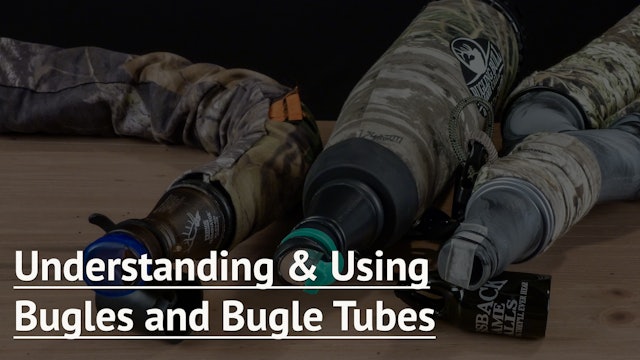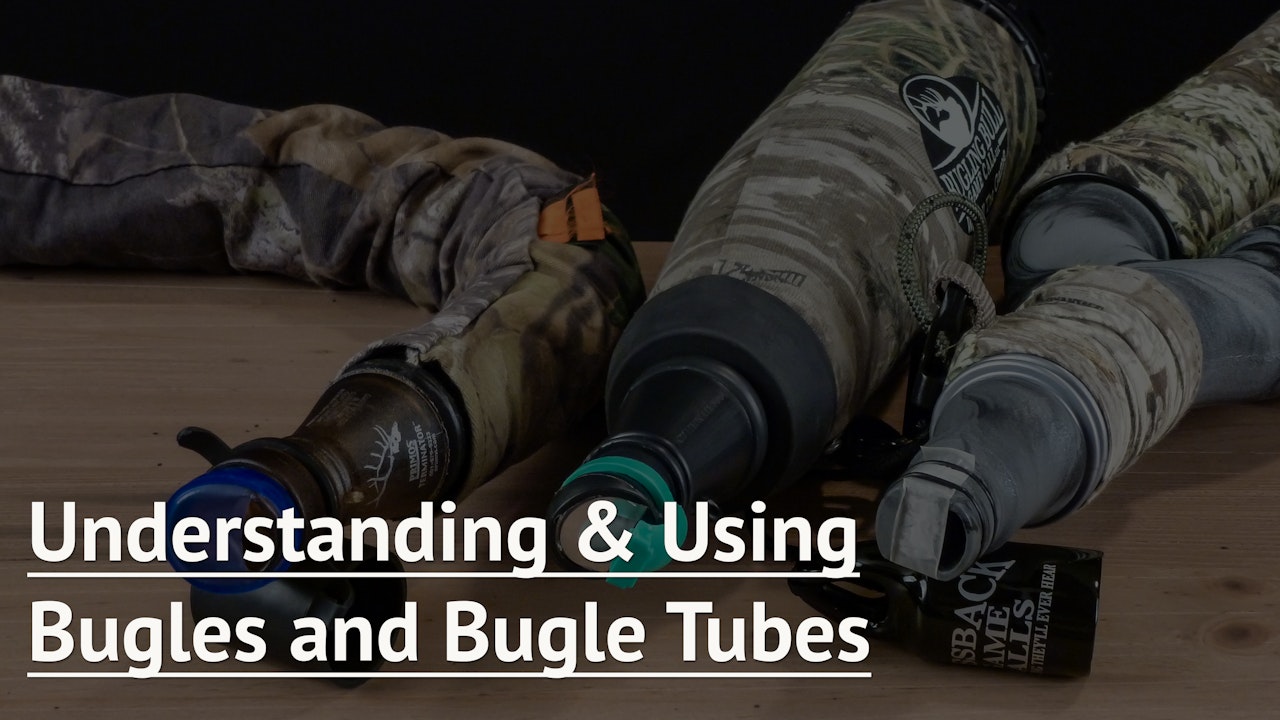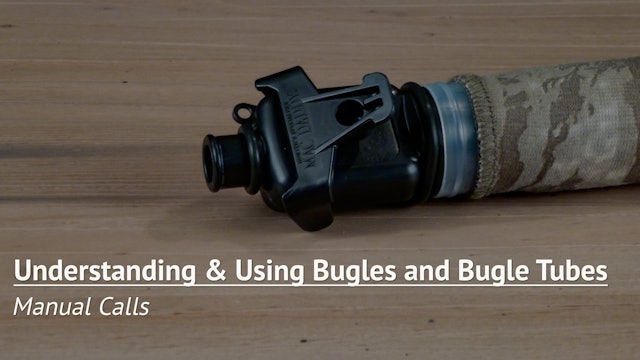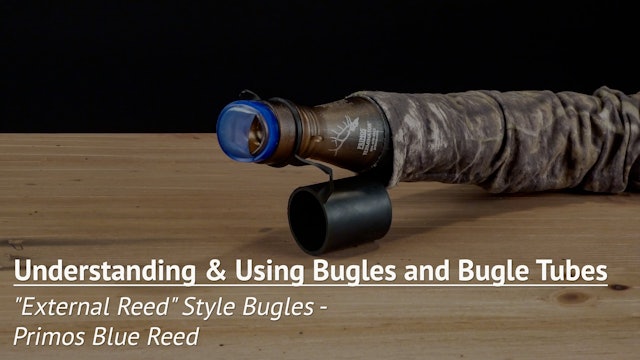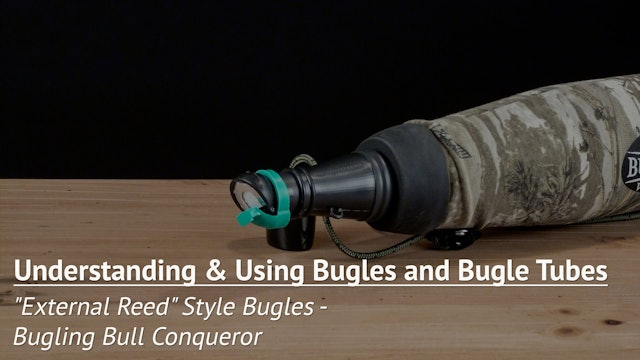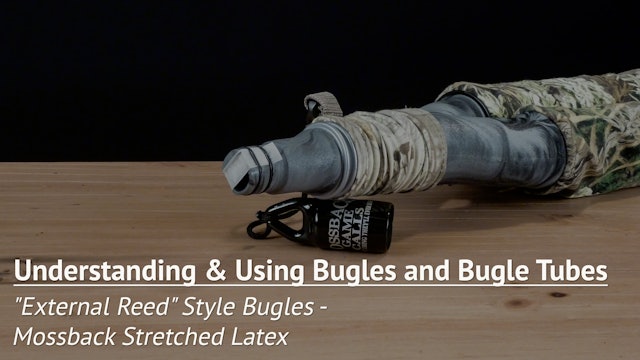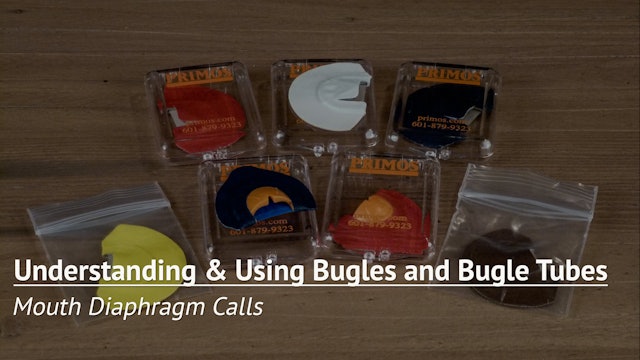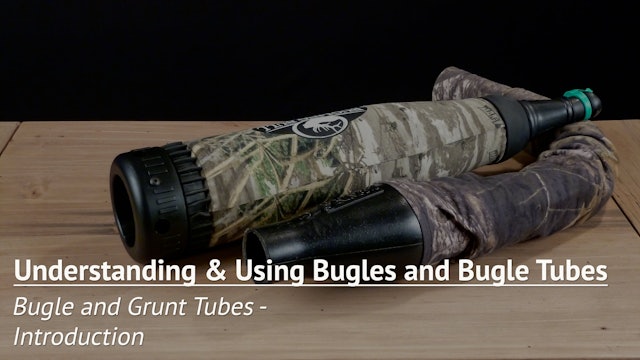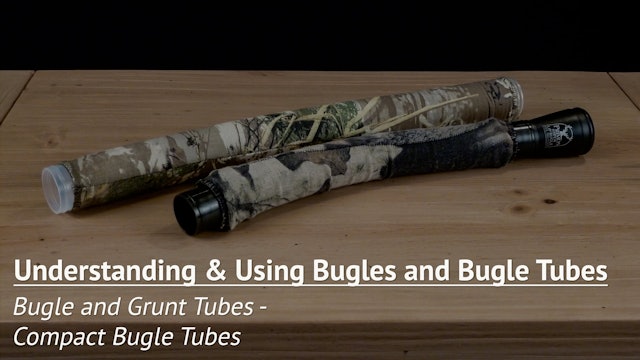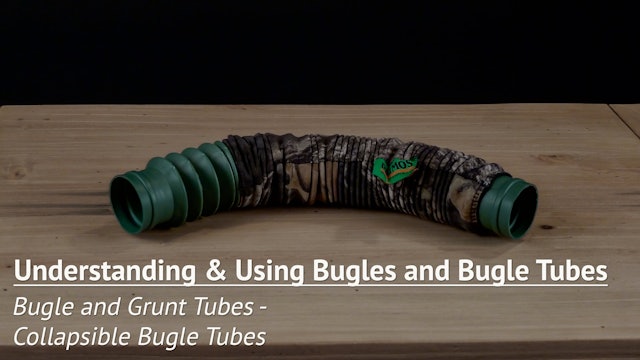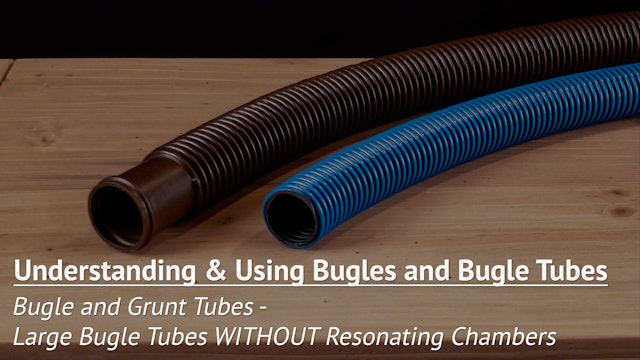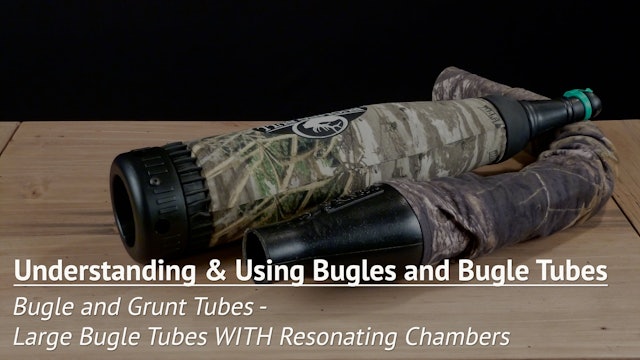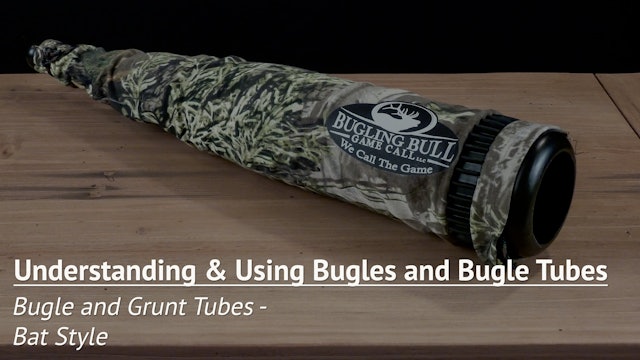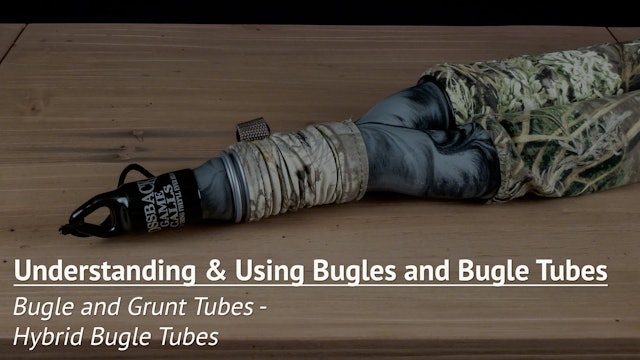Understanding and Using Bugles and Bugle Tubes
If you’ve even THOUGHT about hunting elk in and around the rut, at some point your thoughts are likely to turn to elk bugles, and bugle tubes. But with so many calls to choose from, it can be a bit confusing – if not overwhelming – trying to figure out how the different bugles are used, how to get the best sound out of them, how they sound in comparison to each other, and which one you should buy if you happened to be in the market for one.
In this Series, Chris goes over three of the most popular “classes” of bugles (or elk calls and mouthpieces that can be used for bugling) that are on the market. Those classes include “Manual” bugles, External Reed style bugles, and Mouth Diaphragm calls – from three of the most popular manufacturers – those being Primos Hunting Calls, Hunter’s Specialties/Carlton Calls, and Bugling Bull Game Calls, and one relative new-comer to the elk calls scene – Mossback Game Calls. Chris not only covers how each of the calls is used and how to get the best sound out of it, but the advantages/disadvantages and strengths/weaknesses of each as well. In addition, Chris goes over the different types of tubes that are commonly available – the small, compact tubes, collapsible tubes, large tubes without resonating chambers on them, large tubes WITH resonating chambers on them, and “bat” style “tubes.” Finally, Chris goes over the advantages/disadvantages and strengths/weaknesses of each of the tubes, and talks about the realities of what to expect when calling through them.
By the end of this Series, you should have a much better understanding of some of the bugles and tubes that are available. You will know how they work, how they compare to each other, their advantages/disadvantages and strengths/weaknesses, and what to look for in an elk bugle based on your experience level or personal preferences should you be in the market to purchase one.
-
Manual Calls
In this video, Chris covers the “Mac Daddy” bugle and mouthpiece – from HS/Carlton Calls – which is pretty much the only “Manual” bugle available on the market today. Chris will not only go over how to use it, but he’ll go over the advantages/disadvantages and strengths/weaknesses as well.
-
"External Reed" Style Bugles - Introduction
In these videos, Chris goes over three of the more popular external reed style bugles or mouthpieces on the market, from three different manufacturers: the Primos “Blue Reed” mouthpiece, Bugling Bull Game Calls’ "Conqueror" mouthpiece, and Mossback Game Calls’ stretched latex mouthpiece. Each has...
-
"External Reed" Style Bugles - Primos Blue Reed
-
"External Reed" Style Bugles - Bugling Bull Conqueror
-
"External Reed" Style Bugles - Mossback Stretched Latex
-
Mouth Diaphragm Calls
In this video, Chris goes over mouth diaphragm calls, focusing on the palate plate and dome style mouth diaphragms of Primos Hunting Calls and Bugling Bull Game Calls. Since their debut on the mouth diaphragm scene, palate plate and dome style mouth calls have rocketed to the top of some of the m...
-
Bugle and Grunt Tubes - Introduction
Just like with the bugle mouthpieces and reeds themselves, there are a variety of different styles of bugle tubes – or grunt tubes – to choose from. In these videos, Chris goes over the five most common styles of bugle tubes – compact tubes, collapsible tubes, tubes without resonating chambers, t...
-
Bugle and Grunt Tubes - Compact Bugle Tubes
-
Bugle and Grunt Tubes - Collapsible Bugle Tubes
-
Bugle and Grunt Tubes - Large Bugle Tubes WITHOUT Resonating Chambers
-
Bugle and Grunt Tubes - Large Bugle Tubes WITH Resonating Chambers
-
Bugle and Grunt Tubes - Bat Style
-
Bugle and Grunt Tubes - Hybrid Bugle Tubes

